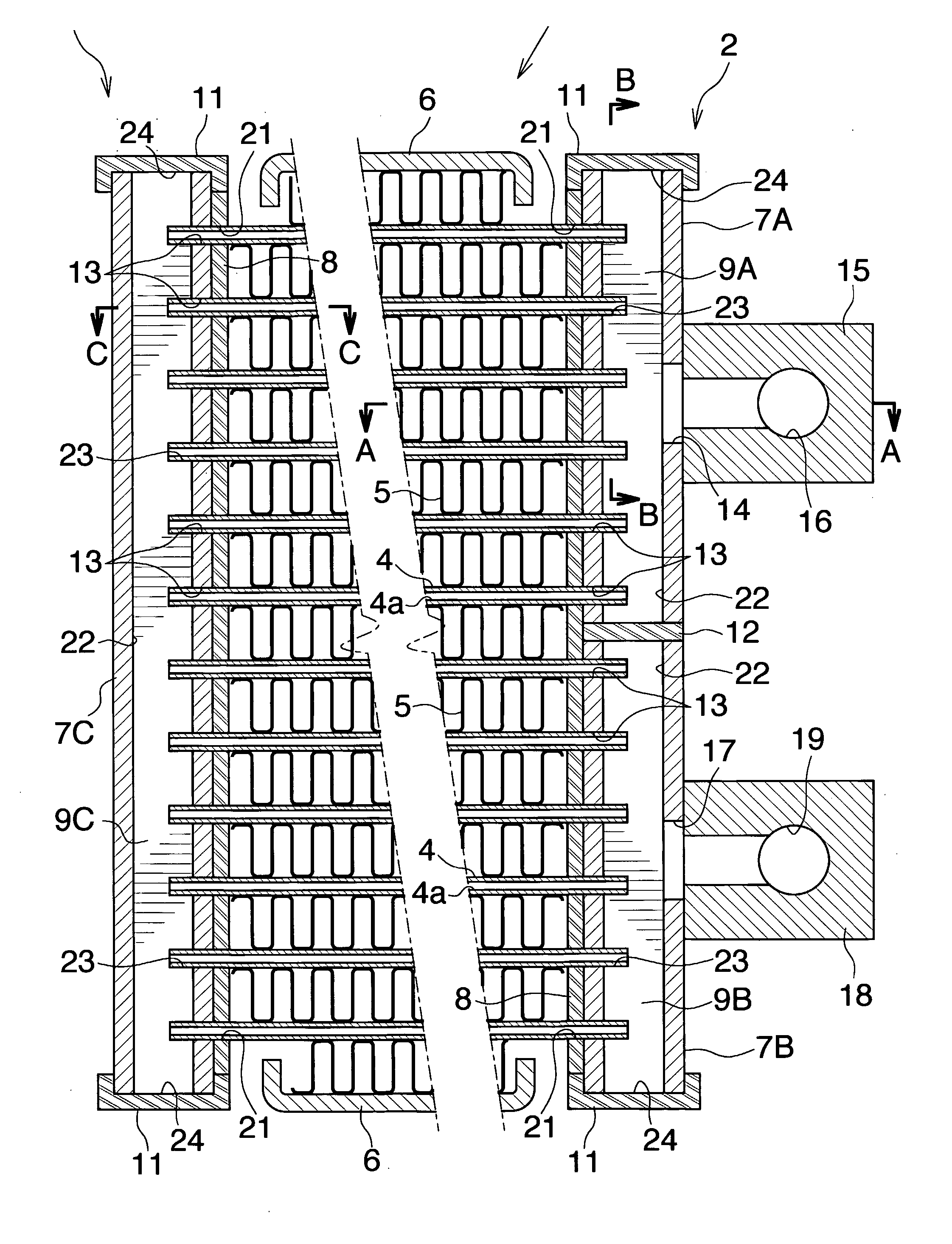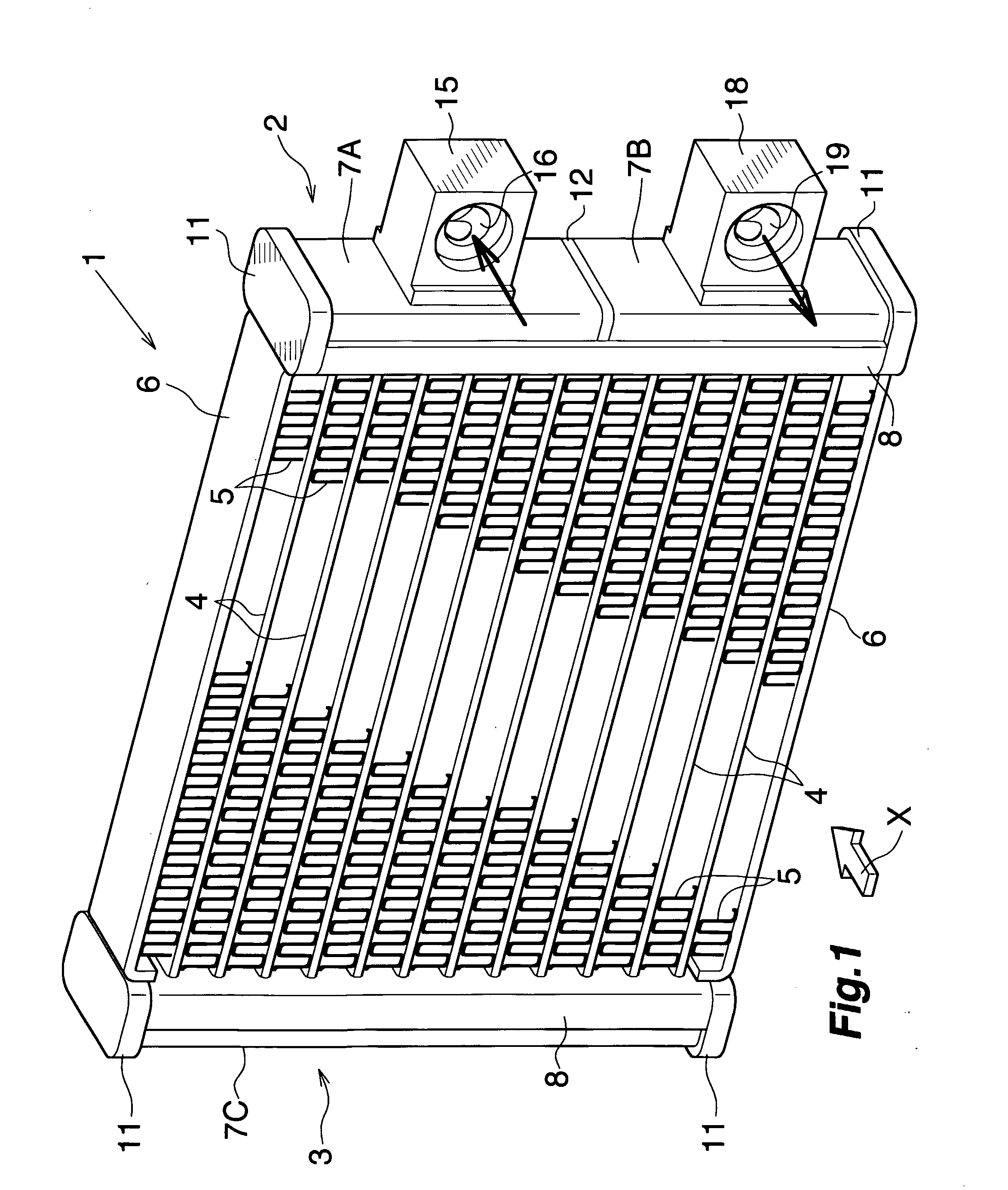Heat Exchanger
a technology of heat exchanger and heat exchanger plate, which is applied in the direction of indirect heat exchanger, refrigeration components, lighting and heating apparatus, etc., can solve the problems of increased cost and failure of header tanks to assume an appropriate cross-sectional profile, and achieve enhanced heat exchange performance, and enhanced heat exchange performance
- Summary
- Abstract
- Description
- Claims
- Application Information
AI Technical Summary
Benefits of technology
Problems solved by technology
Method used
Image
Examples
embodiment 1
[0059] This embodiment is shown in FIGS. 1 to 9 and is implemented by applying a heat exchanger according to the present invention to a gas cooler of a supercritical refrigeration cycle.
[0060] With reference to FIGS. 1 and 2, a gas cooler 1 of a supercritical refrigeration cycle wherein a supercritical refrigerant, such as CO2, is used includes two header tanks 2, 3 extending vertically and separated from each other in the left-right direction; a plurality of flat heat exchange tubes 4 arranged in parallel between the two header tanks 2, 3 and separated from one another in the vertical direction; corrugated fins 5 arranged in respective air-passing clearances between adjacent heat exchange tubes 4 and at the outside of the upper-end and lower-end heat exchange tubes 4 and each brazed to the adjacent heat exchange tubes 4 or to the upper-end or lower-end heat exchange tube 4; and side plates 6 of bare aluminum material arranged externally of and brazed to the respective upper-end an...
embodiment 2
[0079] This embodiment is shown in FIGS. 13 to 20 and is implemented by applying a heat exchanger according to the present invention to an evaporator of a supercritical refrigeration cycle.
[0080] With reference to FIGS. 13 and 15, an evaporator 40 of a supercritical refrigeration cycle wherein a supercritical refrigerant, such as CO2, is used includes two header tanks 41, 42 extending in the left-right direction and separated from each other in the vertical direction; a plurality of flat heat exchange tubes 43 arranged in parallel between the two header tanks 41, 42 and separated from one another in the left-right direction; corrugated fins 44 arranged in respective air-passing clearances between adjacent heat exchange tubes 43 and at the outside of the left-end and right-end heat exchange tubes 43 and each brazed to the adjacent heat exchange tubes 43 or to the left-end or right-end heat exchange tube 43; and side plates 45 of bare aluminum material arranged externally of and braz...
PUM
 Login to View More
Login to View More Abstract
Description
Claims
Application Information
 Login to View More
Login to View More - R&D
- Intellectual Property
- Life Sciences
- Materials
- Tech Scout
- Unparalleled Data Quality
- Higher Quality Content
- 60% Fewer Hallucinations
Browse by: Latest US Patents, China's latest patents, Technical Efficacy Thesaurus, Application Domain, Technology Topic, Popular Technical Reports.
© 2025 PatSnap. All rights reserved.Legal|Privacy policy|Modern Slavery Act Transparency Statement|Sitemap|About US| Contact US: help@patsnap.com



